optoNCDT ILD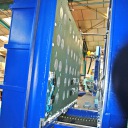
Quick ViewView Full Details |
The
module is hermetically sealed using a vacuum during a new method for the
production of photovoltaic modules. The correct distance between glass front
and metal rear side is important for this vacuum. Therefore, the distance of
the glass pane to the rear side is automatically measured from one side in the
production using confocal sensors. |
LLT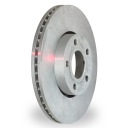
Quick ViewView Full Details |
In any type of vehicle, the braking system is one of the most important safety features. This is why high requirements are placed on all braking system components. When manufacturing brake discs, the different sizes must be strictly adhered to. One critical feature is the gap between the plates of the brake disc. Therefore, the gapCONTROL 2911-25 gap sensor is used. |
LLT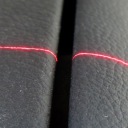
Quick ViewView Full Details |
Car interiors present a number of gaps, for example, between the single cockpit elements such as the center console or door trim. From a technical point of view, it is often irrelevant if the width and height of a gap are constant. However, the interior is an area of the car that the customer sees first. The gapCONTROL profile scanner inspects the gaps of all parts in the car interior during final assembly. |
2D Laser Scanner, Optical Micrometer, laser triangulation sensor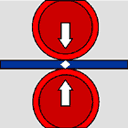
Quick ViewView Full Details |
Displacement Sensor for Gap Measurement If
two object edges are joined together, a gap always remains. If the gap has to
satisfy technical or visual requirements, the course with respect to the size
must be checked. If the gap should be measured completely, laser scanners in
the scanCONTROL series are ideally suitable for this. Point laser sensors in
the optoNCDT group are also used for precise gap measurement over a track. |
LLT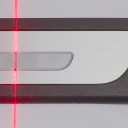
Quick ViewView Full Details |
In
high quality vehicles, the trim typically consists not only of a single
material (e.g. plastics) but many different bonded materials. This offers
various design options but also many additional functions e.g. illumination
using semi-transparent parts. Bonding or welding these elements requires
precise handling, as parts that are only slightly misaligned can cause large
deviations in the corresponding gap size. In order to meet the high
requirements demanded by automotive manufacturers, it is necessary to inspect
all trim prior to delivery and to rework any defective parts. And this is where
the scanCONTROL 2910-25 laser scanner comes in. |
optoCONTROL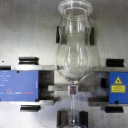
Quick ViewView Full Details |
In
the production of drinking glasses, the stem and cup are connected using a gas
burner. In order to enable the precise connection of the glass stem and cup,
the distance between stem and cup needs to be measured. Monitoring this gap
size allows for feed rate control during production. An optoCONTROL optical
micrometer measures this gap. |
eddyNCDT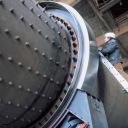
Quick ViewView Full Details |
Hydrostatic
bearings are used in large plant and machinery such as stone mills, telescopic
installations etc. Monitoring the gap size is a critical factor, as any
disturbances in the hydraulics can cause pressure drops, which in extreme
cases, can cause the gap to close, resulting in damage to the bearings and
ultimately system failure. Here, it is important to have a system that is easy
to install as also ageing plants have to be retrofitted. Due to the long
service life and the worldwide use of this plant, the sensor should be easy to
replace. For this reason, non-contact eddy current displacement sensors of the
eddyNCDT 3001 series are used. |
eddyNCDT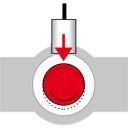
Quick ViewView Full Details |
According
to ISO 18084:2011, the press tools for the tablet production are subject to a
continuous quality control. Due to complex geometry and a strongly reflecting
surface, automatic inspection of stamps and dies has been difficult. Only the
use of a confocal sensor (confocalDT 2451) and an optical micrometer
(optoCONTROL 2600) together with a precise movement with 5 degrees of freedom
enabled the development of »Ti-1«. Ti-1 is a complex measurement system
equipped with a USB interface and special software for the geometric and visual
inspection of tools. |
ODC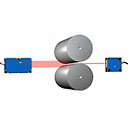
Quick ViewView Full Details |
The
distance of both rollers from each other or from the roller to the support
surface is the crucial dimension for rolling processes for metals, plastics or
other materials. In the case of sensitive processes and high material
accuracies, the clearance must be checked constantly so that imminent rejection
is avoided. The contacting inductive and the non-contact methods are suitable
for this. In the case of contacting methods, the sensor is mounted on the
outside on the roller guide. The change in clearance is transmitted to a
plunger whose position change is measured by the inductive sensor. In the case
of the non-contact method, the roller is between the transmitter and receiver
of an optical micrometer. The emitted light curtain is partially covered by the
roller. The remainder reaches the receiver through the gap. The gap can be
calculated based on the light quantity measurement. |
eddyNCDT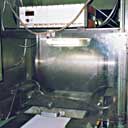
Quick ViewView Full Details |
For
continuous, uniform material processing in the field of sealing technology, the
gap between the rolls must be set with the hydraulic adjustment device and
maintained constant. For this reason the top and bottom rolls are provided with
a shoulder and an aluminum ring as measurement objects to the left and right.
Using the aluminum ring, errors due to the roll material can be avoided. Two
eddy current sensors mounted opposite one another measure the distance to the
aluminum ring from a fixed reference point. The roll gap can be found from the
sum of the two distances. |


